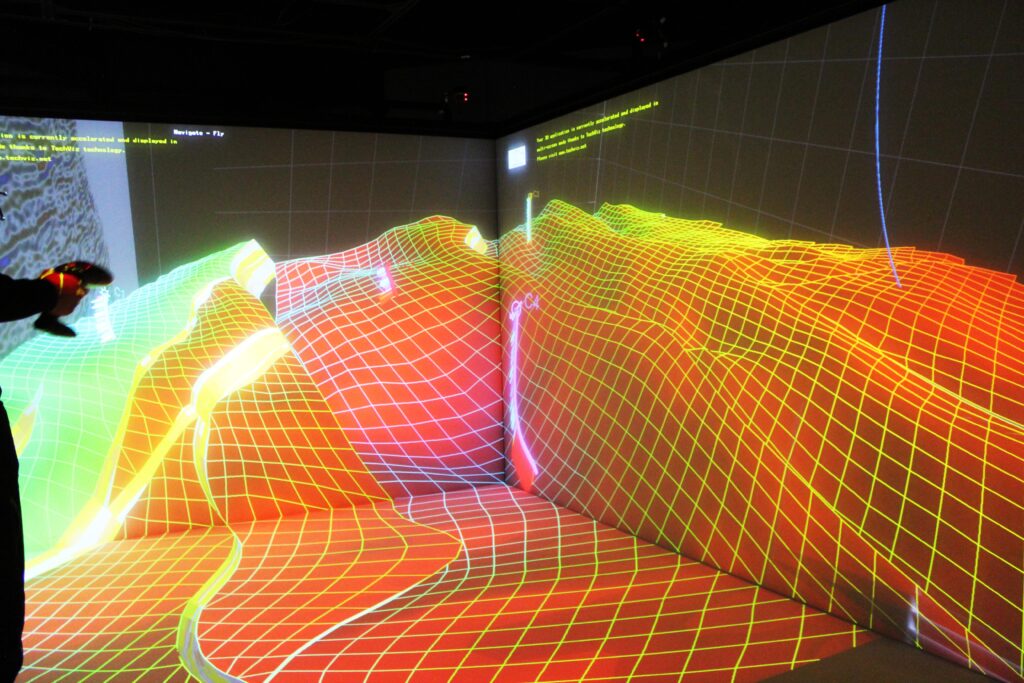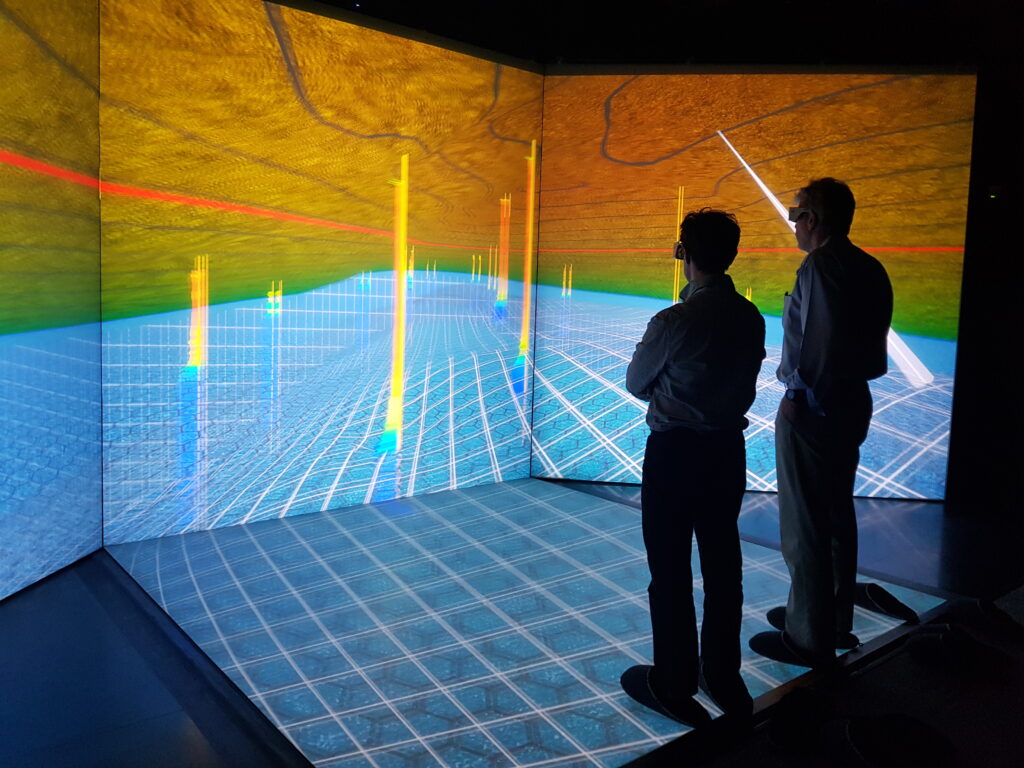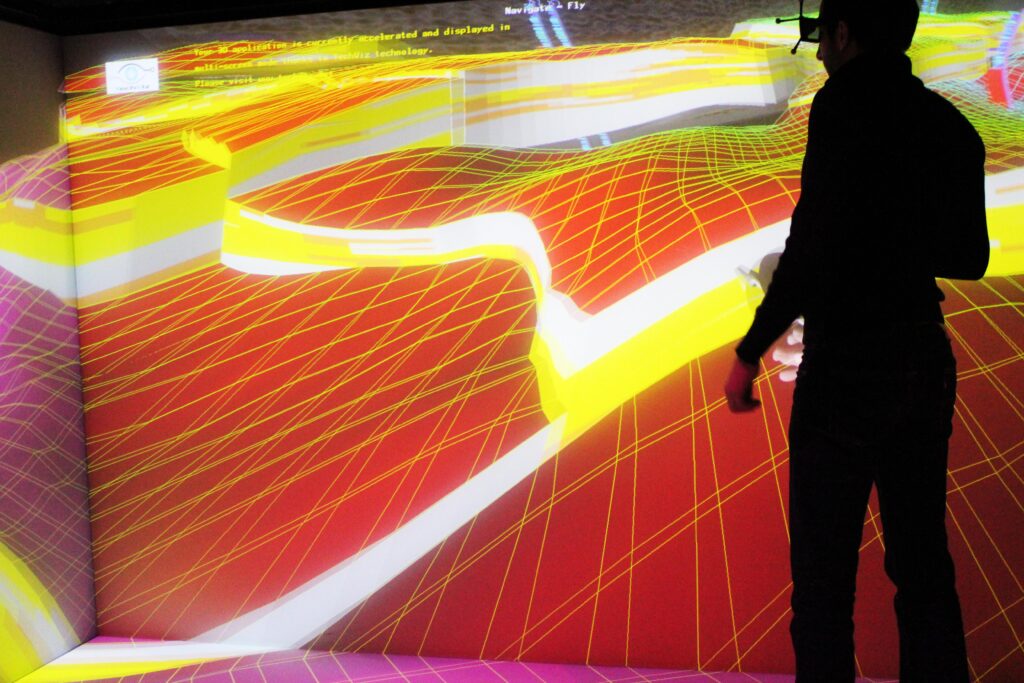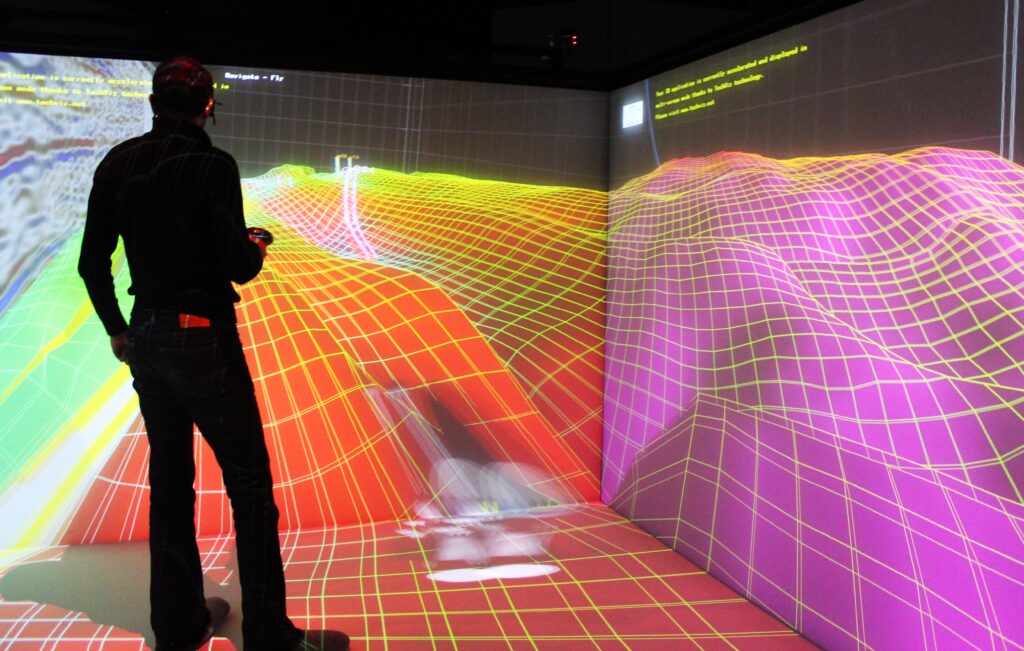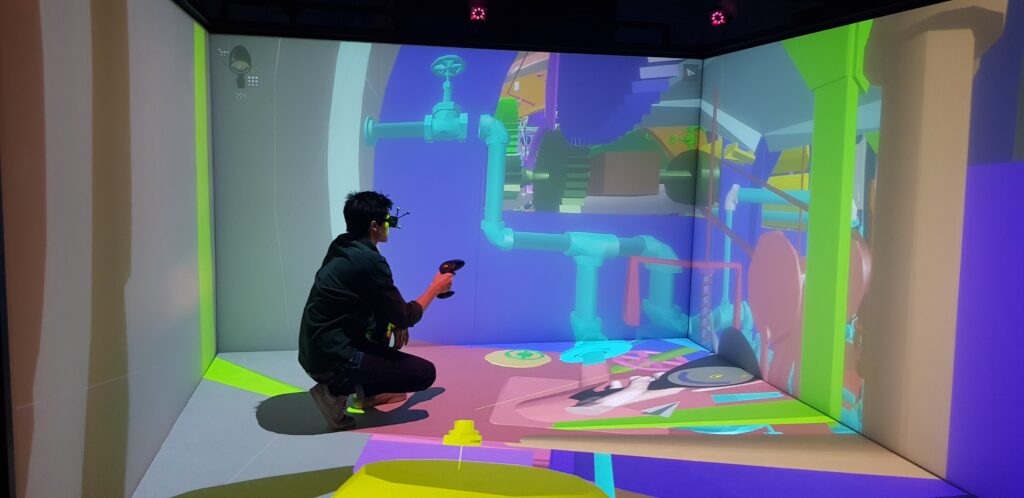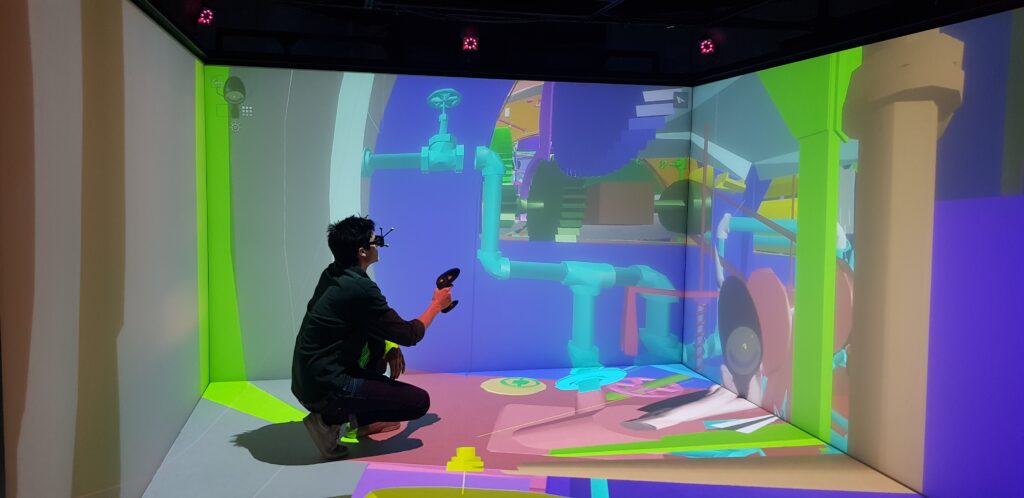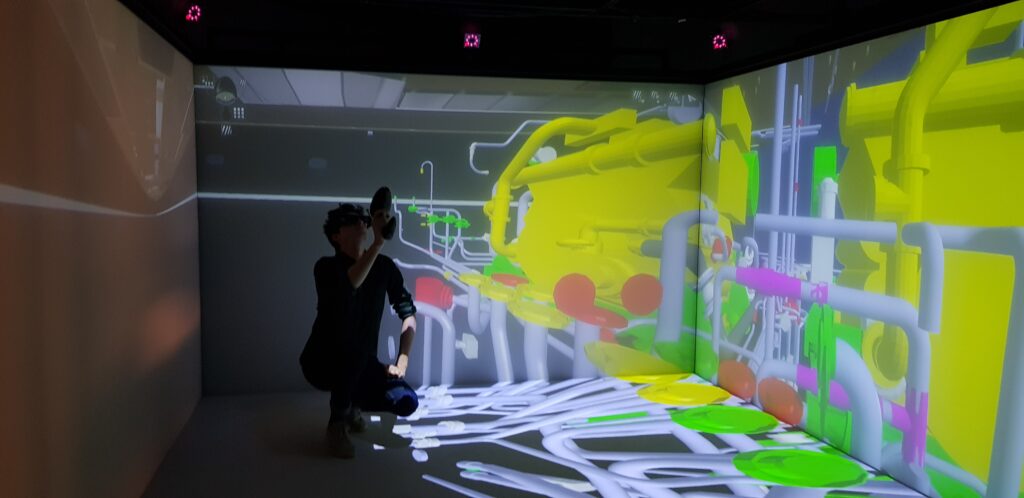

Willkommen auf der Spezialseite von TechViz für die Öl- und Gasindustrie, auf der hochmoderne Virtual Reality (VR)-Lösungen den komplexen Herausforderungen des Energiesektors begegnen. TechViz nutzt die Leistungsfähigkeit von VR und Augmented Reality (AR) und verändert die Art und Weise, wie Unternehmen Daten visualisieren, remote zusammenarbeiten, Mitarbeiter schulen und wichtige Entscheidungen bei der Exploration, Produktion und darüber hinaus treffen. Entdecken Sie unsere innovativen Lösungen und entdecken Sie, wie TechViz die Zukunft der Öl- und Gasindustrie neu gestaltet.
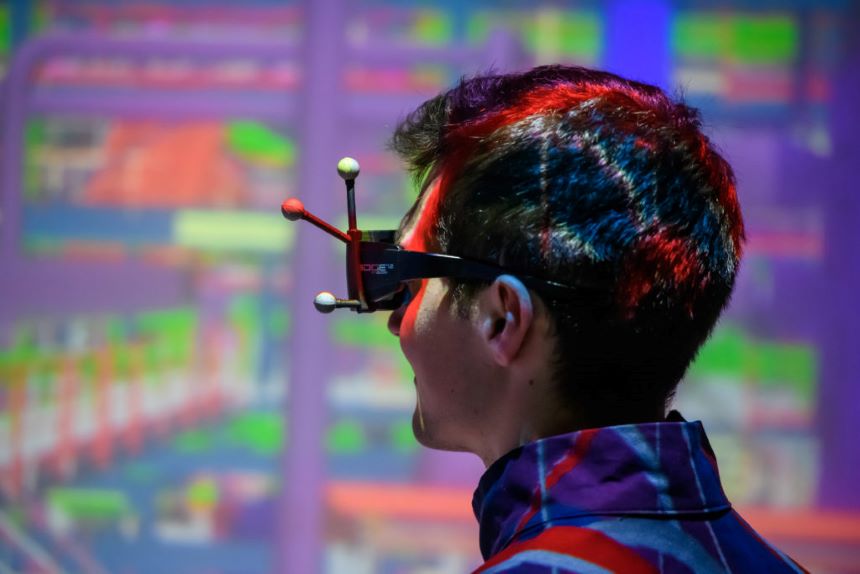
Die Energiebranche erlebt mit der zunehmenden Verbreitung von Virtual-Reality- (VR) und Augmented-Reality-Technologien (AR) einen tiefgreifenden Wandel.
Von der Simulation komplexer Bohrvorgänge bis zur Visualisierung komplizierter Daten in 3D ermöglicht VR ein Maß an Präzision und Weitsicht, das bisher unerreichbar war. Bei TechViz sind wir stolz darauf, mit Branchenführern zusammenzuarbeiten und ihnen dabei zu helfen, in einer sich schnell entwickelnden Landschaft die Nase vorn zu behalten. Unsere hochmodernen VR-Lösungen sind nicht nur Werkzeuge, sondern transformative Erfahrungen, die die Zukunft des Energiesektors neu gestalten.
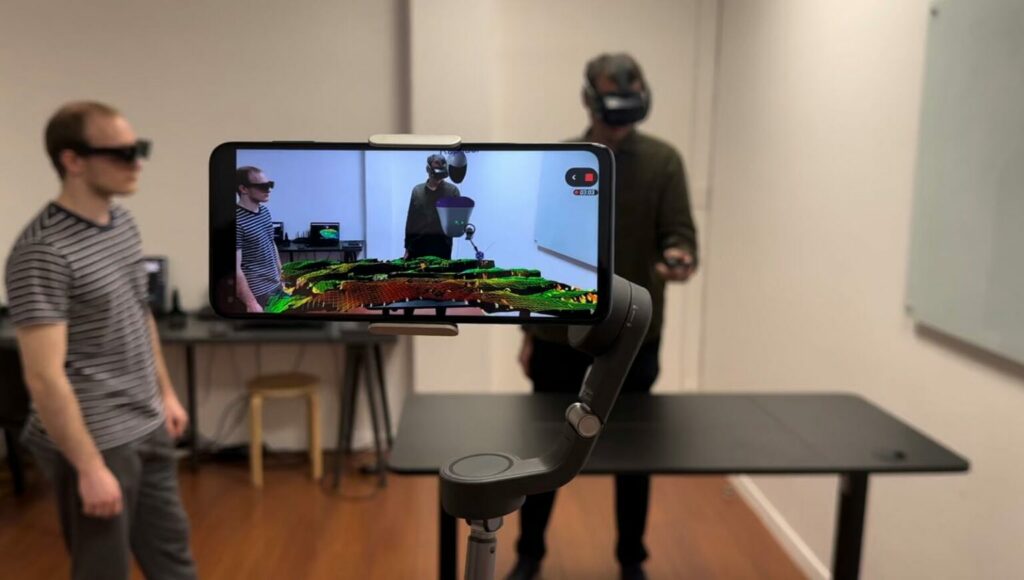
VR- und AR-Technologien ermöglichen die Visualisierung neuer Produkte und Designs im Frühstadium, sodass Unternehmen Fehler erkennen und korrigieren können, bevor sie mit der Produktion beginnen. Dies führt zu besseren Entscheidungen, höherer Effizienz und geringeren Kosten während des gesamten Projektlebenszyklus.
AR erleichtert die Echtzeit-Zusammenarbeit zwischen Experten in der Zentrale und Außendienstmitarbeitern, reduziert Reisekosten und Umweltbelastung und maximiert gleichzeitig die Effizienz.
VR/AR-Headsets bieten immersive Schulungserlebnisse, verbessern die Mitarbeiterbindung und senken die Schulungskosten im Vergleich zu herkömmlichen Methoden.
AR-Headsets bieten Technikern Live-Zugriff auf Servicedokumente und Handbücher und überlagern die Geräte mit Wartungsanweisungen in Echtzeit, um die Wartungsprozesse zu optimieren.
VR ermöglicht die Fernerkundung von Ölfeldern und die präzise Entscheidungsfindung bei der Platzierung von Bohrstellen, und Augmented Reality ermöglicht es technischen Experten, mehrere Standorte gleichzeitig zu überwachen und zu unterstützen.
Die TechViz-Kerntechnologie ermöglicht immersive Visualisierung von mehr als 200 3D-Anwendungen ohne Datenkonvertierung. Hierzu gehören häufig verwendete Anwendungen im Energiesektor, beispielsweise Schlumberger Petrel, wie im obigen Video gezeigt.
